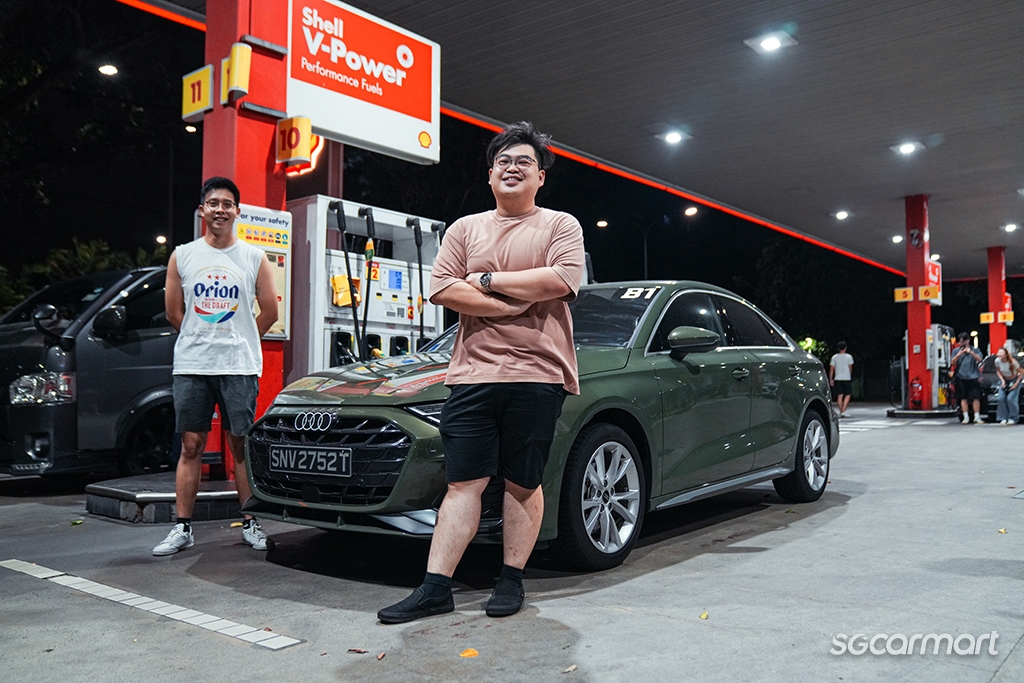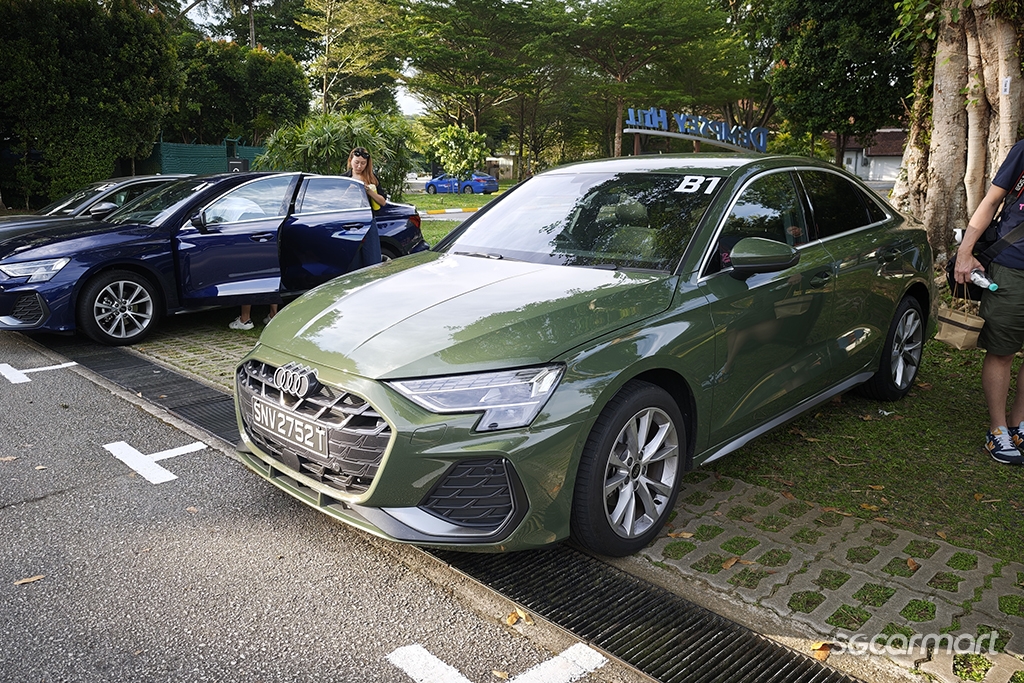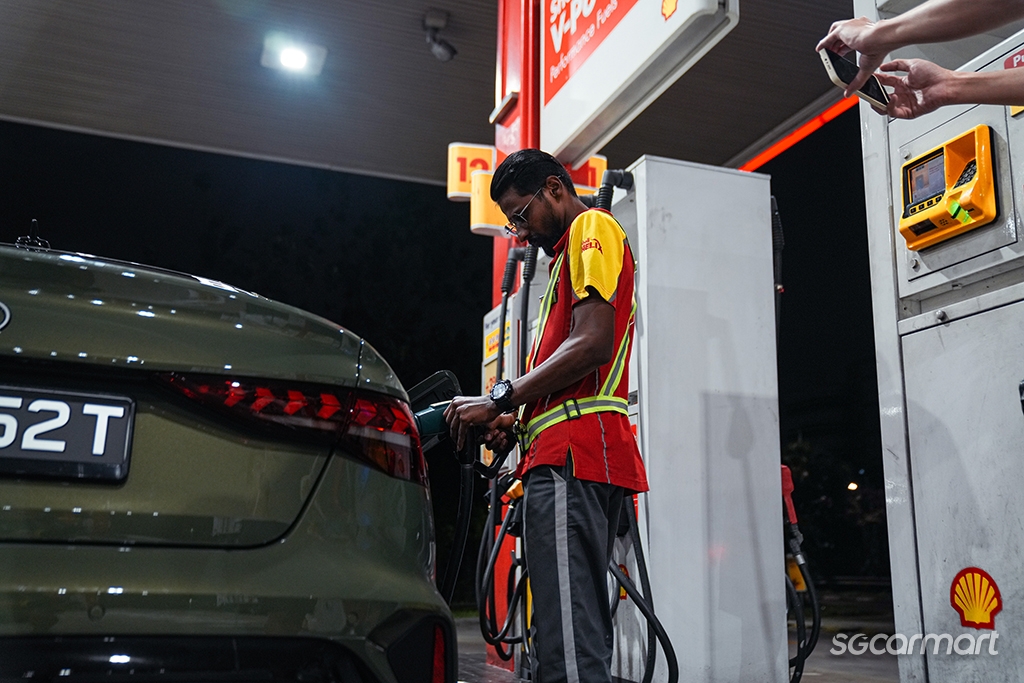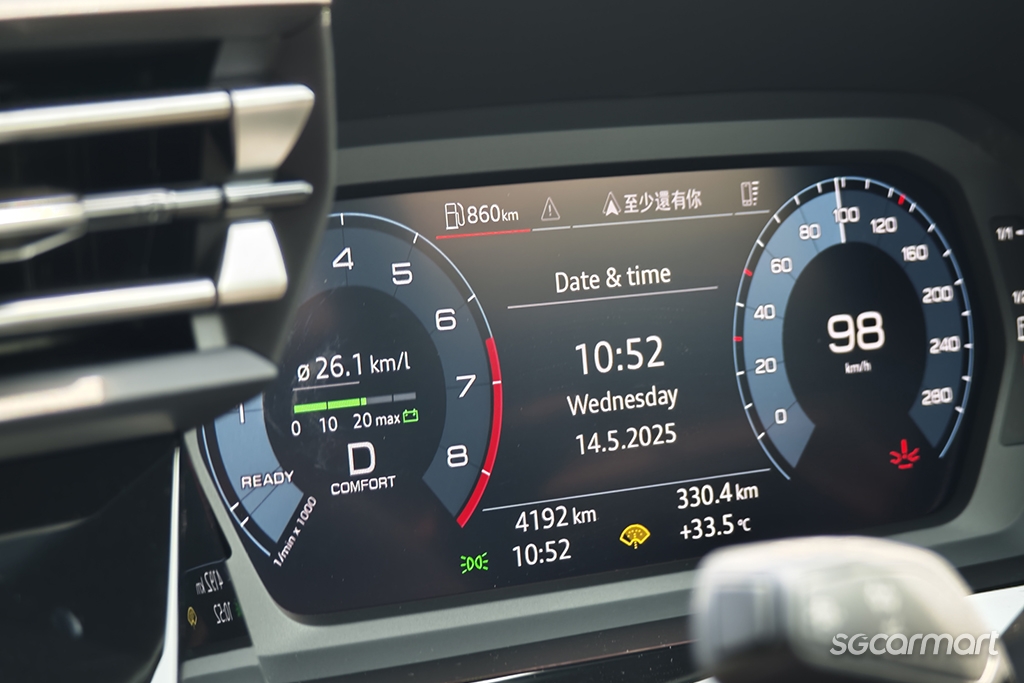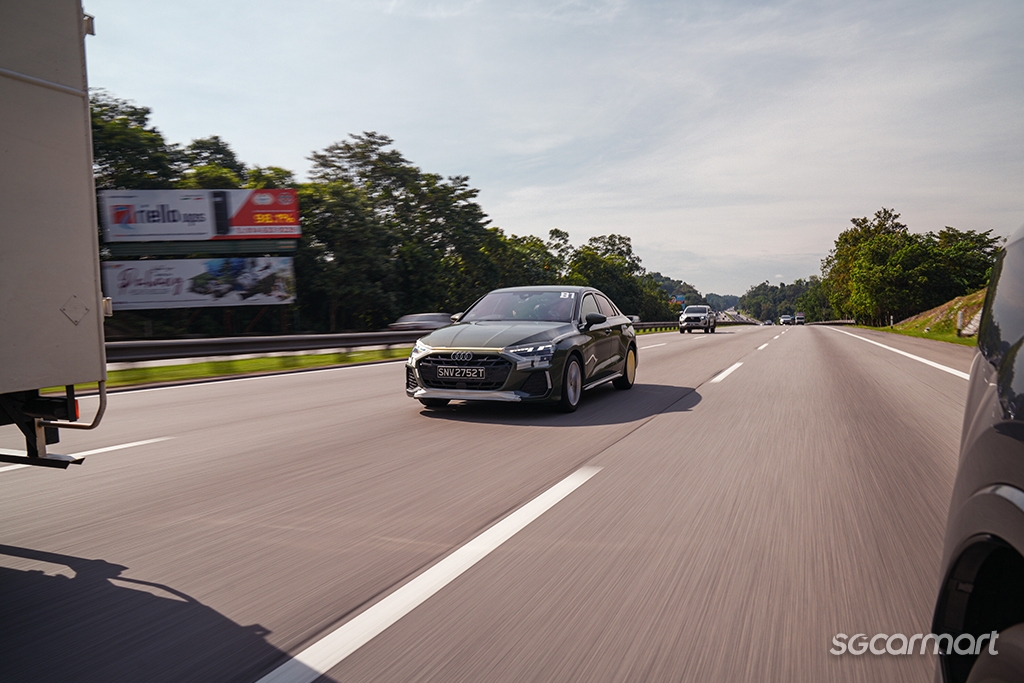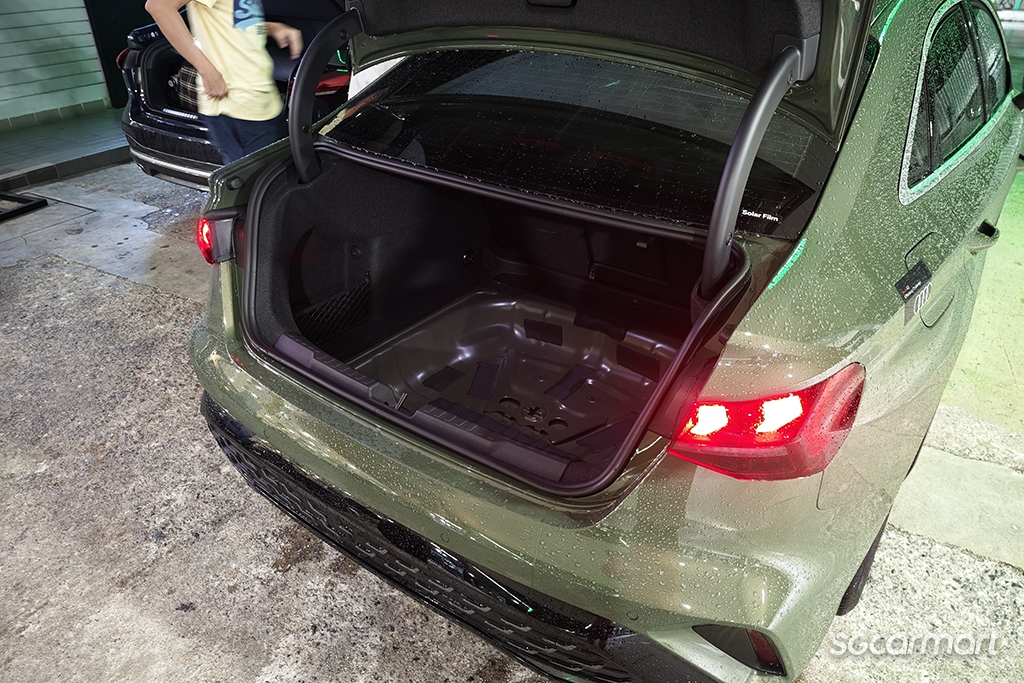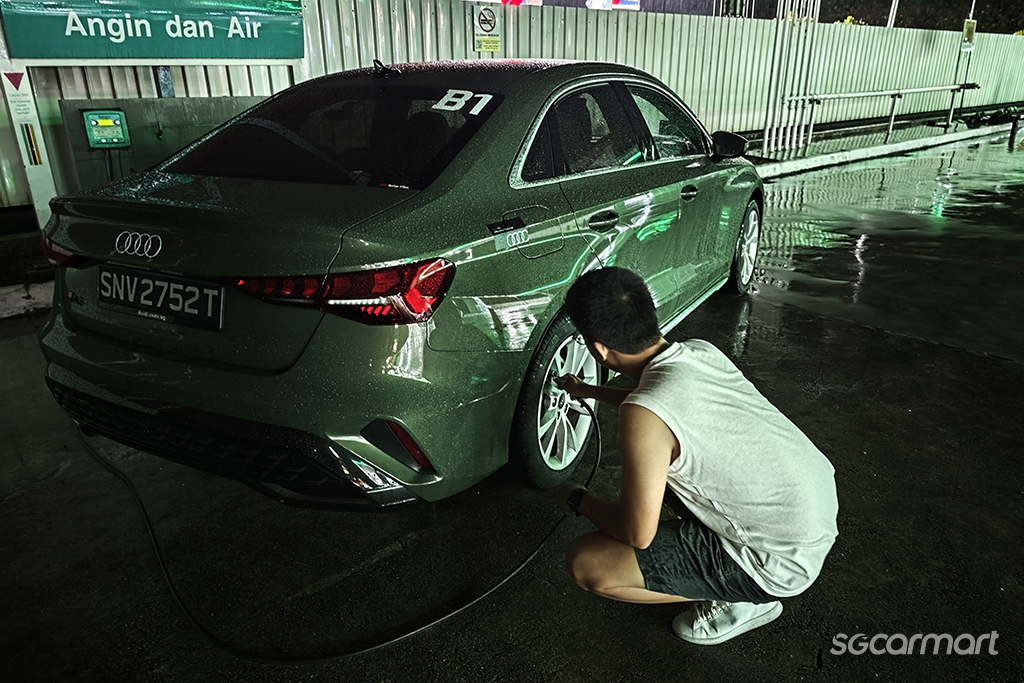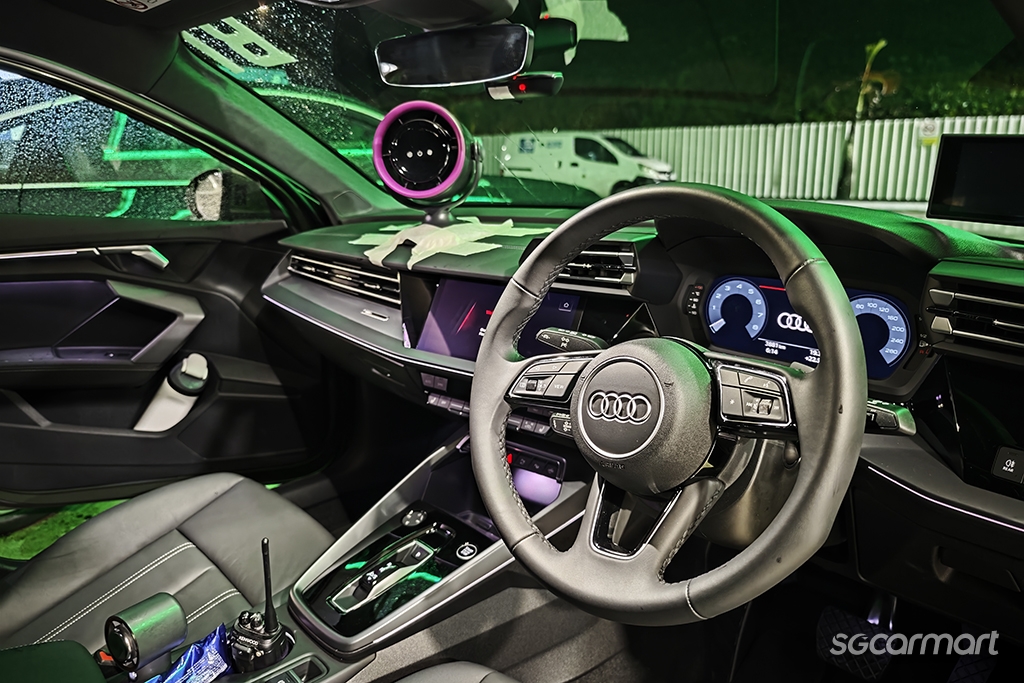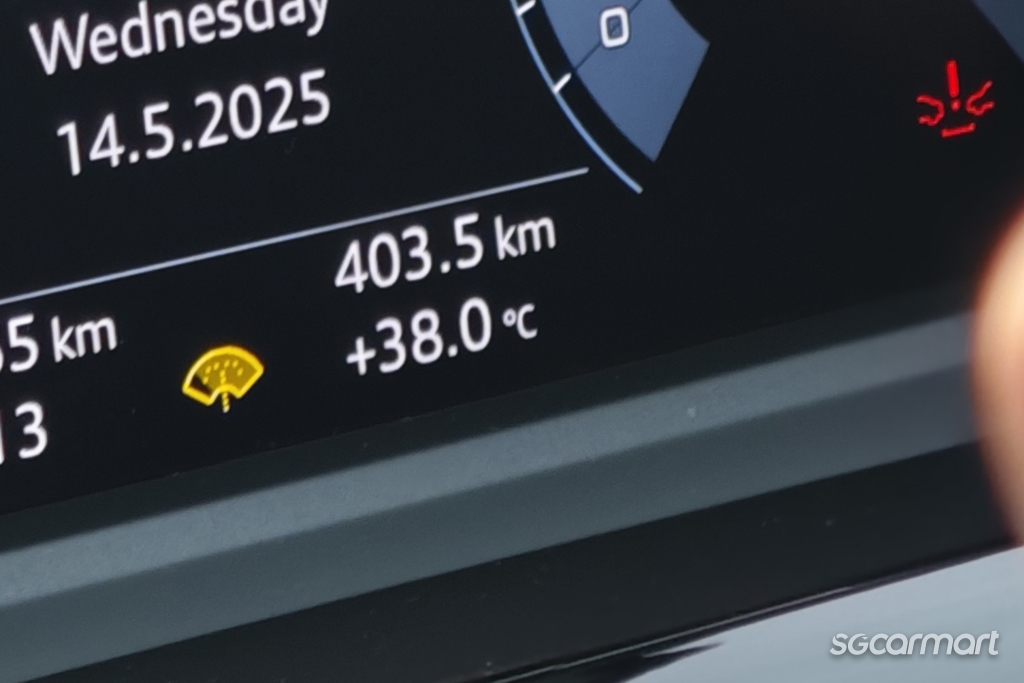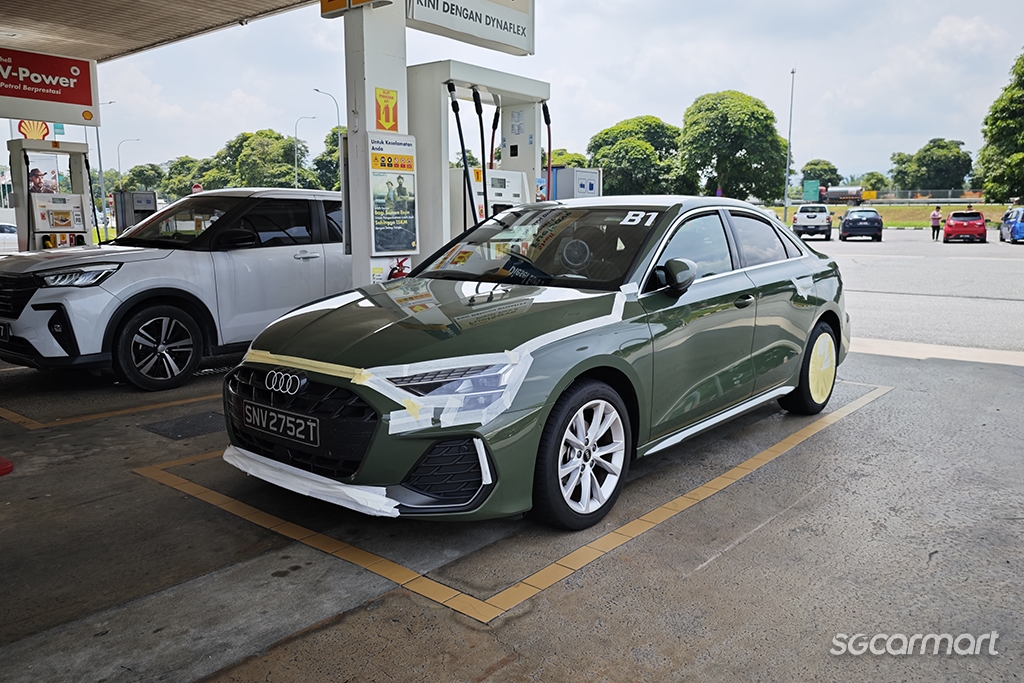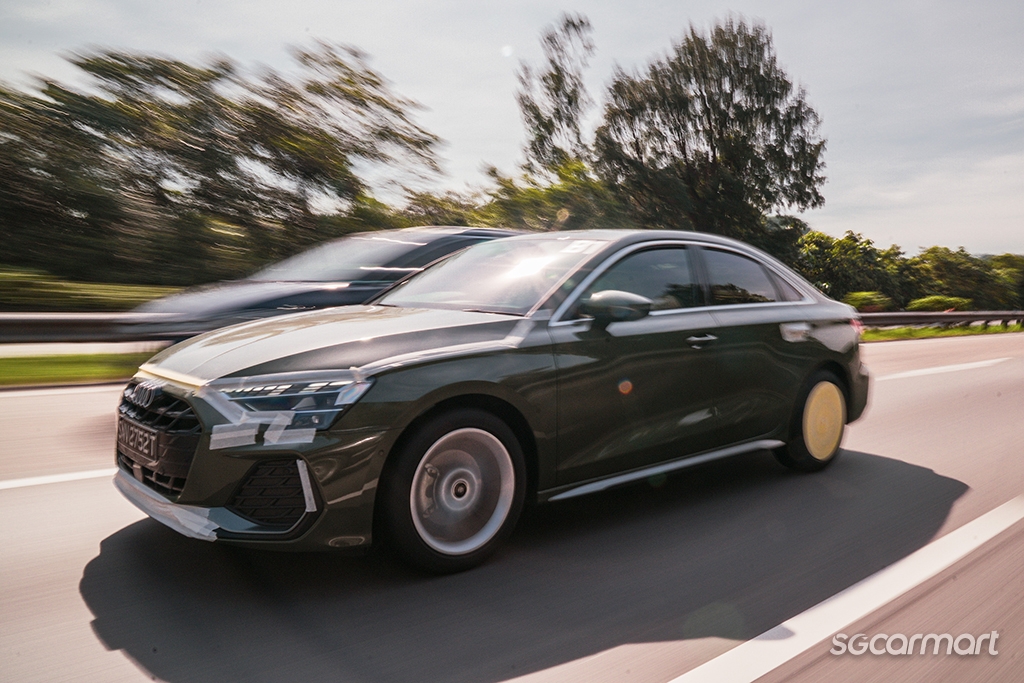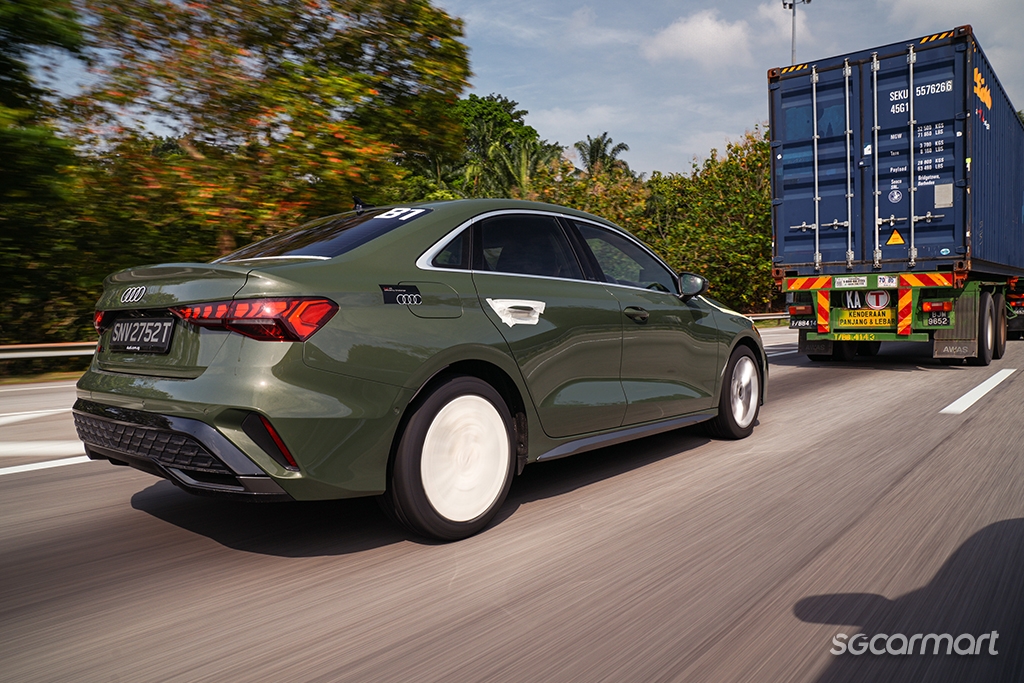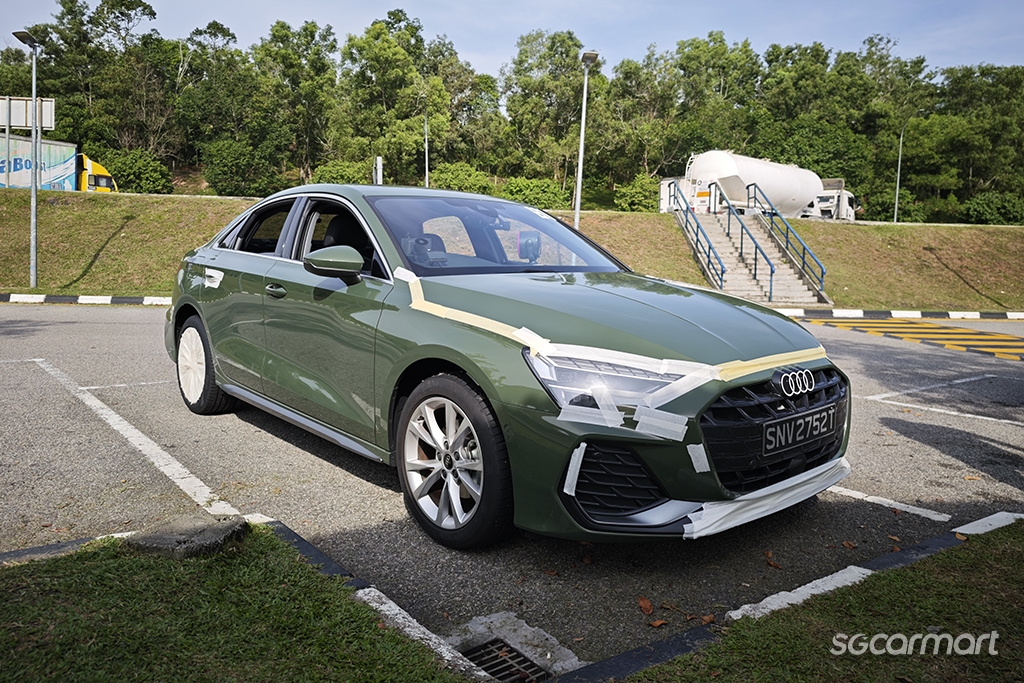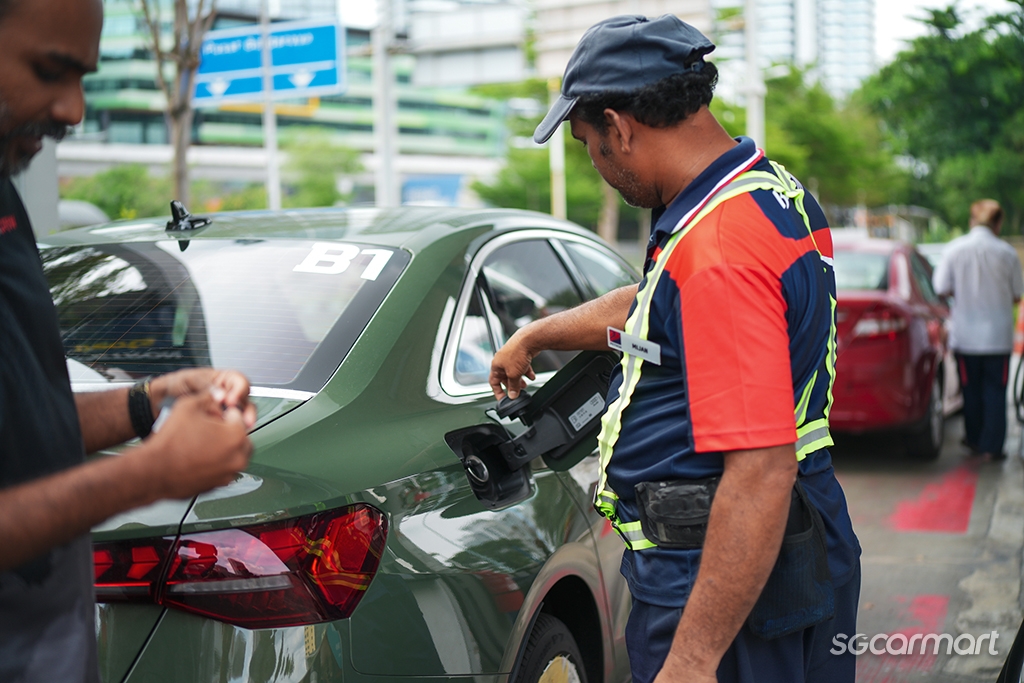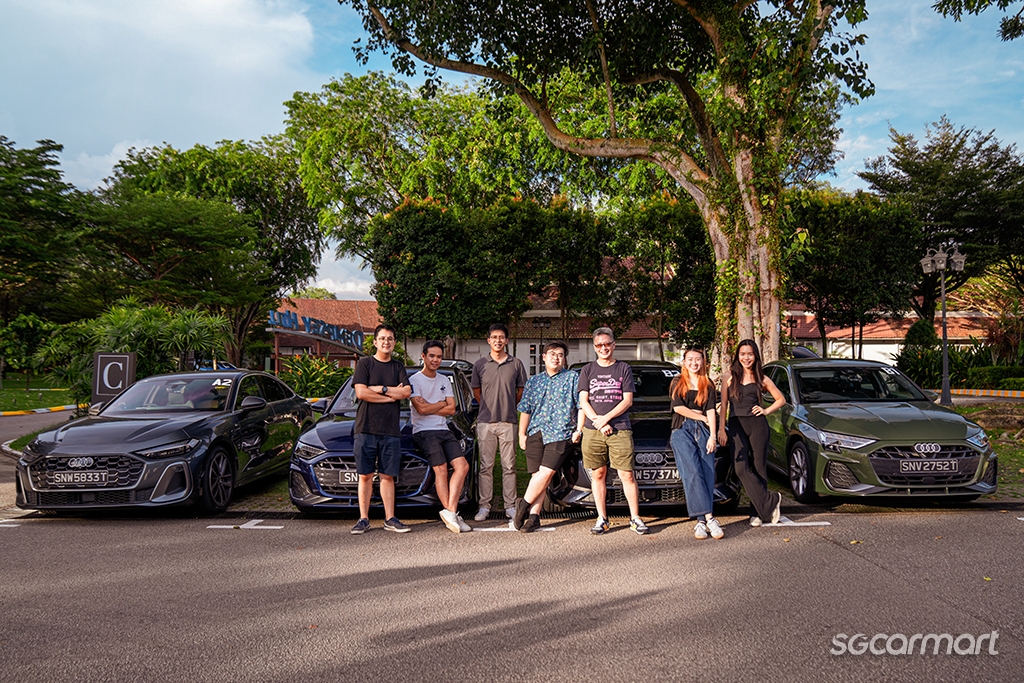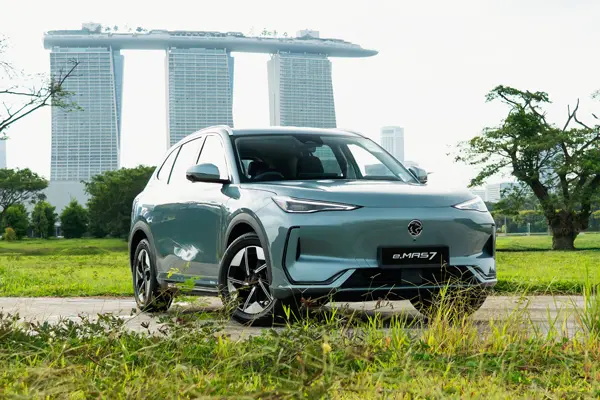Chasing the ultimate fuel economy with the new Audi A3
26 May 2025|5,661 views
A perk of our job as automotive journalists is the opportunity to drive some of the latest cars on media trips organised by car brands. And media trips come in many different flavours - on some trips you'll get to drive fun cars on racetracks, others allow you to drive through scenic routes, and sometimes driving isn't even on the itinerary!
Fuel economy challenges often allow you to spend the most time with a particular car - but it isn't exactly the most comfortable or relaxing one. And it's especially the case when you want to win against equally competitive participants…
Oftentimes, extreme measures are taken to clinch the crown, and call it what you like, but I think pushing the limits is exactly the way to respect the challenge and the organisers (oh, and it sure adds to the fun too). By a stroke of luck, I was paired with the similarly competitive and perhaps insane Aiden for this fuel economy challenge with the new Audi A3, just months after we set a fuel economy record with the Jaecoo J7 PHEV. I'm pretty sure you won't be ready for the shenanigans that ensued on this trip.
The chosen machine: The new Audi A3
The star of this challenge is the recently facelifted Audi A3. The A3 trades its previous 1.0-litre engine for a 1.5-litre mild hybrid setup that puts out 114bhp (5 more than before) and 220Nm of torque.
The new A3 is now powered by a 1.5-litre mild hybrid drivetrain that achieves a respectable fuel economy of 16.1km/L
The A3 is a premium compact sedan that looks sporty and is well-equipped with amenities such as wireless Android Auto and Apple CarPlay to make for an enjoyable drive. But what's especially relevant to our challenge is its respectable fuel economy of 16.1km/L, achieved with innovative features such as its fuel-saving coasting mode.
However, if you've ever participated in a fuel economy challenge, you'll know that it isn't that simple - everyone has some secret moves to bring the fuel consumption well below the official figure.
To the many PHV and taxi drivers: Getting on and off the accelerator isn't the trick
We all know that official fuel economy figures should only be used as a reference as the actual numbers can vary wildly. While the car's capabilities play a huge part, the way you drive does as well. So, how should you drive to save fuel?
Well, take it from someone that has participated in a few fuel economy challenges. What you want to do is to accelerate as gently as possible, and avoid unnecessary and harsh braking that could shave off too much momentum. Any excessive acceleration would cause fuel consumption to shoot up, and that isn't what you want.
Hence, consider the myth busted - your on/off accelerator trick does not help to save fuel, it just makes your passengers nauseous and uncomfortable.
Reducing the load on the car - methods that you can adapt to your daily drive
Without doing anything to the engine, the only way to reduce fuel consumption is to reduce the load that it has to bear, and there are many ways to do it.
First, you'll want to keep weight to a minimum - unfortunately, I easily outweigh most people, so we are kind of at the losing end here. But we still had to do our best, and this meant removing everything that isn't needed from the car. The rear boot floor, rear headrests, and our luggage were all shifted to another car. Even the windscreen wiper fluid was purposefully depleted just moments into our drive.
Next up is an attempt to reduce rolling resistance - we added a little pressure to the tyres (be careful not to overdo it as it can be dangerous). The stiffer tyres as a result of the increased pressure would theoretically allow the tyres to roll with less deflection, and hence less resistance - cyclists would know this by heart.
Taking it to the extreme
While everything till now is applicable to your daily quest for improved fuel economy, we took things way further this time round.
With outside temperature reaching 38 degrees Celsius, we had to take a rest stop at the petrol kiosk to cool ourselves down
Through our previous experience, we've found out that the air-conditioning system is quite a fuel guzzler, and this was the case even with a plug-in hybrid that has an electrically powered air-con compressor. You'll also want to keep the window gaps to a minimum in order to reduce aerodynamic drag, hence the car's cabin will get extremely hot - with the outside temperature hovering around 38 degrees Celsius, I'm certain the inside temperature of our car was well above 40 degrees Celsius.
This time round, I've prepared a USB rechargeable fan that we taped to the dashboard of the A3 for some air circulation, which sure helped to make things a little more bearable. But it still wasn't anywhere near comfortable - we had to make a couple of stops at the petrol kiosks just to catch a breather…
The wind (air) is your greatest enemy, any methods that could reduce the effects of aerodynamic drag will aid in fuel economy, especially when driving at expressway speeds
Minimal drag = less effort needed to sustain speed
The greatest enemy to fuel economy is the wind. I'm talking about aerodynamics - I'm sure you've noticed the term drag coefficient being mentioned around car body design. Modern EVs and hybrids that are created with fuel efficiency in mind, are all designed to move through the air with minimal resistance, and that plays an important role in our tactics for this challenge.
Our 'Low Drag Configuration' A3 was crafted at Ayer Keroh rest stop, with three rolls of masking tape - aero rear wheels and gaps sealed up
While Audi has designed the A3 with aerodynamics in mind - it has a low drag coefficient of 0.25, we've decided to tape up gaps on the front-end of the A3 to gain an aerodynamic edge. With a fair bit of drafting behind other vehicles, this move probably didn't have as much effect as what we did with the rear wheels though. From my research, aero wheel covers such as those on many Tesla and other EV models can improve fuel efficiency by as much as 3%! Hence, we taped up the rear wheels on the A3 to create our own budget, temporary aero wheels.
The result was an admittedly comical-looking A3, but we were out to win. And win we did. After 762km of driving, our A3 consumed a mere 27.599 litres of fuel, which works out to a fuel consumption of 27.645km/L! Our competitor wasn't too far behind as well - they achieved 26.689km/L.
Lessons learnt from winning yet another fuel economy challenge
The outlandish tactics to save fuel do work. However, in a casual setting, no one in their right mind would go to such an extent to save some fuel. But then again, conventional driving would never allow one to beat the official fuel consumption figure by over 11km/L! While the figure that we managed to achieve isn't comparable to what your daily drive would result in, many of these methods are adaptable, and applicable.
So, if you are looking to save fuel on your daily drive, be sure to drive gently and keep your car junk-free! You could turn off the air-con and keep the windows up, but I wouldn't recommend doing so, it's too much of a torture!
A perk of our job as automotive journalists is the opportunity to drive some of the latest cars on media trips organised by car brands. And media trips come in many different flavours - on some trips you'll get to drive fun cars on racetracks, others allow you to drive through scenic routes, and sometimes driving isn't even on the itinerary!
Fuel economy challenges often allow you to spend the most time with a particular car - but it isn't exactly the most comfortable or relaxing one. And it's especially the case when you want to win against equally competitive participants…
Oftentimes, extreme measures are taken to clinch the crown, and call it what you like, but I think pushing the limits is exactly the way to respect the challenge and the organisers (oh, and it sure adds to the fun too). By a stroke of luck, I was paired with the similarly competitive and perhaps insane Aiden for this fuel economy challenge with the new Audi A3, just months after we set a fuel economy record with the Jaecoo J7 PHEV. I'm pretty sure you won't be ready for the shenanigans that ensued on this trip.
The chosen machine: The new Audi A3
The star of this challenge is the recently facelifted Audi A3. The A3 trades its previous 1.0-litre engine for a 1.5-litre mild hybrid setup that puts out 114bhp (5 more than before) and 220Nm of torque.
The new A3 is now powered by a 1.5-litre mild hybrid drivetrain that achieves a respectable fuel economy of 16.1km/L
The A3 is a premium compact sedan that looks sporty and is well-equipped with amenities such as wireless Android Auto and Apple CarPlay to make for an enjoyable drive. But what's especially relevant to our challenge is its respectable fuel economy of 16.1km/L, achieved with innovative features such as its fuel-saving coasting mode.
However, if you've ever participated in a fuel economy challenge, you'll know that it isn't that simple - everyone has some secret moves to bring the fuel consumption well below the official figure.
To the many PHV and taxi drivers: Getting on and off the accelerator isn't the trick
We all know that official fuel economy figures should only be used as a reference as the actual numbers can vary wildly. While the car's capabilities play a huge part, the way you drive does as well. So, how should you drive to save fuel?
Well, take it from someone that has participated in a few fuel economy challenges. What you want to do is to accelerate as gently as possible, and avoid unnecessary and harsh braking that could shave off too much momentum. Any excessive acceleration would cause fuel consumption to shoot up, and that isn't what you want.
Hence, consider the myth busted - your on/off accelerator trick does not help to save fuel, it just makes your passengers nauseous and uncomfortable.
Reducing the load on the car - methods that you can adapt to your daily drive
Without doing anything to the engine, the only way to reduce fuel consumption is to reduce the load that it has to bear, and there are many ways to do it.
First, you'll want to keep weight to a minimum - unfortunately, I easily outweigh most people, so we are kind of at the losing end here. But we still had to do our best, and this meant removing everything that isn't needed from the car. The rear boot floor, rear headrests, and our luggage were all shifted to another car. Even the windscreen wiper fluid was purposefully depleted just moments into our drive.
Next up is an attempt to reduce rolling resistance - we added a little pressure to the tyres (be careful not to overdo it as it can be dangerous). The stiffer tyres as a result of the increased pressure would theoretically allow the tyres to roll with less deflection, and hence less resistance - cyclists would know this by heart.
Taking it to the extreme
While everything till now is applicable to your daily quest for improved fuel economy, we took things way further this time round.
With outside temperature reaching 38 degrees Celsius, we had to take a rest stop at the petrol kiosk to cool ourselves down
Through our previous experience, we've found out that the air-conditioning system is quite a fuel guzzler, and this was the case even with a plug-in hybrid that has an electrically powered air-con compressor. You'll also want to keep the window gaps to a minimum in order to reduce aerodynamic drag, hence the car's cabin will get extremely hot - with the outside temperature hovering around 38 degrees Celsius, I'm certain the inside temperature of our car was well above 40 degrees Celsius.
This time round, I've prepared a USB rechargeable fan that we taped to the dashboard of the A3 for some air circulation, which sure helped to make things a little more bearable. But it still wasn't anywhere near comfortable - we had to make a couple of stops at the petrol kiosks just to catch a breather…
The wind (air) is your greatest enemy, any methods that could reduce the effects of aerodynamic drag will aid in fuel economy, especially when driving at expressway speeds
Minimal drag = less effort needed to sustain speed
The greatest enemy to fuel economy is the wind. I'm talking about aerodynamics - I'm sure you've noticed the term drag coefficient being mentioned around car body design. Modern EVs and hybrids that are created with fuel efficiency in mind, are all designed to move through the air with minimal resistance, and that plays an important role in our tactics for this challenge.
Our 'Low Drag Configuration' A3 was crafted at Ayer Keroh rest stop, with three rolls of masking tape - aero rear wheels and gaps sealed up
While Audi has designed the A3 with aerodynamics in mind - it has a low drag coefficient of 0.25, we've decided to tape up gaps on the front-end of the A3 to gain an aerodynamic edge. With a fair bit of drafting behind other vehicles, this move probably didn't have as much effect as what we did with the rear wheels though. From my research, aero wheel covers such as those on many Tesla and other EV models can improve fuel efficiency by as much as 3%! Hence, we taped up the rear wheels on the A3 to create our own budget, temporary aero wheels.
The result was an admittedly comical-looking A3, but we were out to win. And win we did. After 762km of driving, our A3 consumed a mere 27.599 litres of fuel, which works out to a fuel consumption of 27.645km/L! Our competitor wasn't too far behind as well - they achieved 26.689km/L.
Lessons learnt from winning yet another fuel economy challenge
The outlandish tactics to save fuel do work. However, in a casual setting, no one in their right mind would go to such an extent to save some fuel. But then again, conventional driving would never allow one to beat the official fuel consumption figure by over 11km/L! While the figure that we managed to achieve isn't comparable to what your daily drive would result in, many of these methods are adaptable, and applicable.
So, if you are looking to save fuel on your daily drive, be sure to drive gently and keep your car junk-free! You could turn off the air-con and keep the windows up, but I wouldn't recommend doing so, it's too much of a torture!
Thank You For Your Subscription.

















